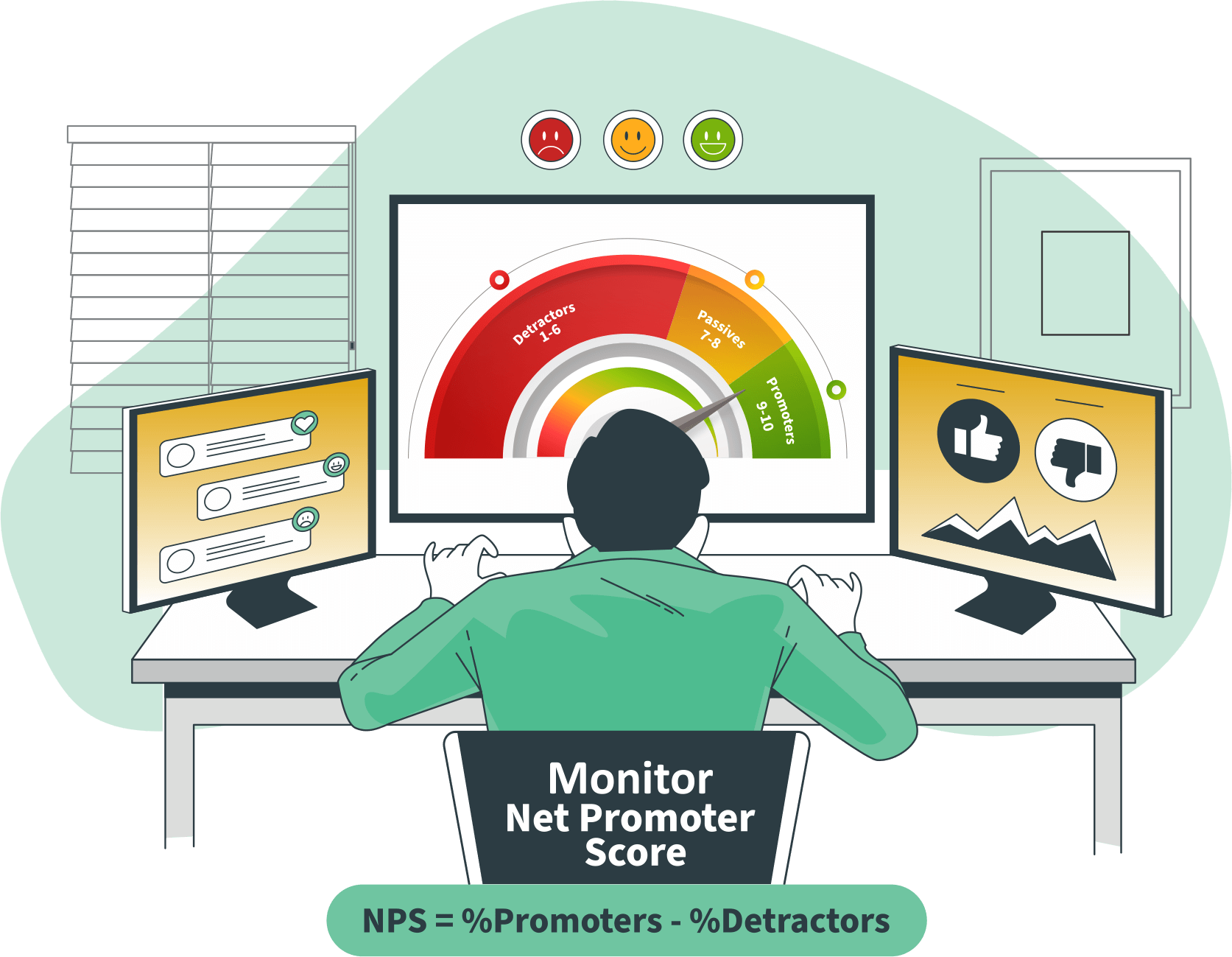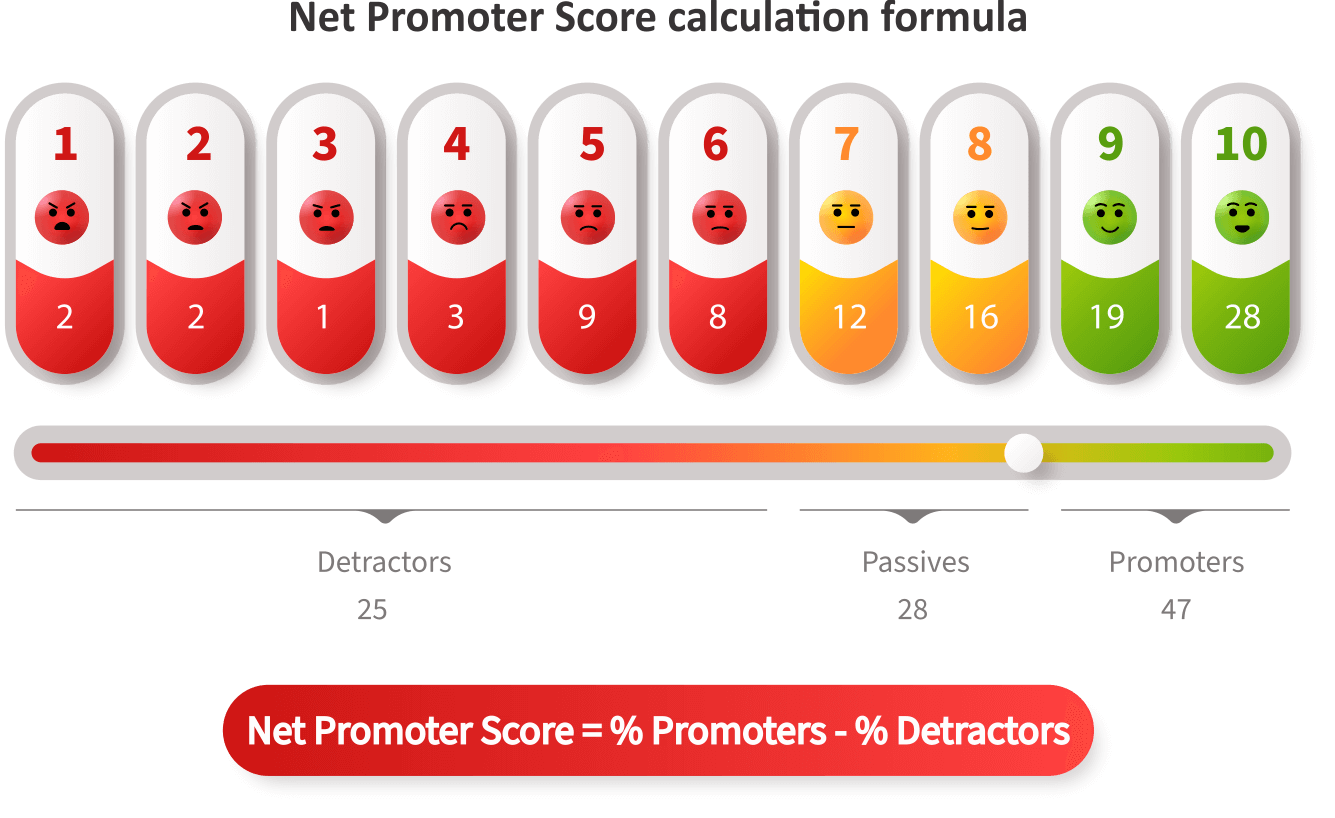Survey All Customers
To calculate the Net Promoter Score, you must survey an accurate sample size of your customers. You need to follow an NPS process to reach all subsets or groups of customers to generate the accurate Net Promoter Score because surveying only a subset or group will present an artificially high or low Net Promoter Score. It will make it difficult to take corrective action.
For example, if you sell your product or services to registered and guest users, then to get an accurate NPS score, you must survey both groups independently to get the correct score.
Measure Pre and post-delivery NPS
It is crucial to measure pre and post-delivery NPS. Besides, some brands only measure post-delivery NPS. However, you must measure and calculate the Net Promoter Score after delivery if you want an accurate and deeper understanding of the customer experience on your app and website.
It will let you determine whether your brand clings to the under-promise, over-deliver principle. The gap between pre and post-delivery NPS is known as the ‘Delivery Gap’ that can be calculated as
Pre-delivery NPS – Post-delivery NPS = The Delivery Gap (Delta NPS)
If the pre-delivery NPS is higher than the post-delivery NPS, it means that you have over-promised and under-delivered. Therefore, to determine if there is a gap between these two phases, you must measure both:
Pre-delivery NPS – You ask customers about their experience on your website or app during the purchase process.
Post-delivery NPS – You enquire about customer experience with the product (during transit and after receiving the products).
For example, Let’s say a woman buys a gown for a wedding from an online clothing store. In this case, for better NPS results, the store can send her two surveys:
- For the pre-delivery: Did our gown colour and size chart help you find the correct size?
- For post-delivery: Did the dress fit you well, or are there any flaws?
The first question explores the woman’s sentiment based on her experience on the site. The second question helps you know her experience with the product you delivered (whether it was good or better than her expectations).
You can further send her follow-up qualitative questions that provide more clarity about the score she gave.
Net Promoter Score by RFM Segment
Analyse Net Promoter Scores by RFM (Recency, Frequency, Monetary) segments to understand the preferences and behaviours of different customer segments. Moreover, RFM analysis and segmentations allow you to identify valuable customers.
RFM analysis reveals data anomalies that allow you to identify the most crucial customer groups when you balance the customer acquisition cost with the margins they generate.
RFM segmentation discovers the most important types of customers by grouping them based on their RFM score. It allows you to target specific customer groups based on their behaviour, thus generating higher response rates, improved customer lifetime value, and increased loyalty.
The primary benefits of monitoring NPS by RFM segments are:
- You can allocate customer service resources based on customer value, which results in improved relationships with the most valuable customers.
- By creating a loyalty program, you can improve customer retention and deliver unique experiences that consider the opinions of your most valuable customers.
NPS by Product/Category/Brand
You must break down your NPS scores by brand, product, or category to identify which offerings are driving customer satisfaction and which may need improvement. Net Promoter Score relates to purchase intent in the future.
Therefore, analysing the NPS by product/category/brand aids you in seeing beyond the revenue each item brings and acknowledges why several products are more successful than others.
For example, if there is a marketing issue (overpromising issue) or an issue related to specific products or product categories you sell. You can reduce customer churn, modify marketing campaigns, and improve your product lineup by observing the Net Promoter Score through this angle.







